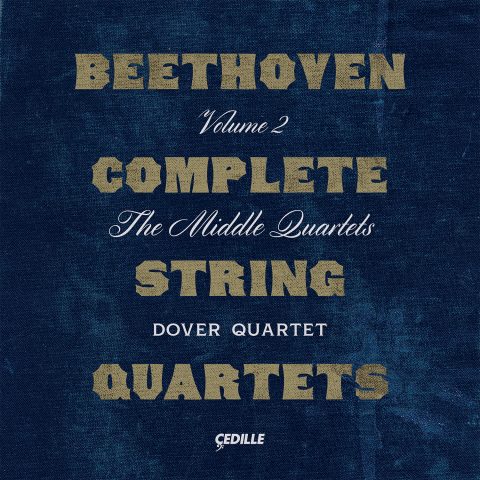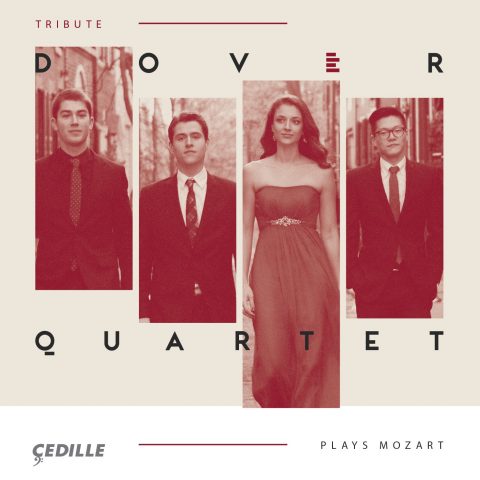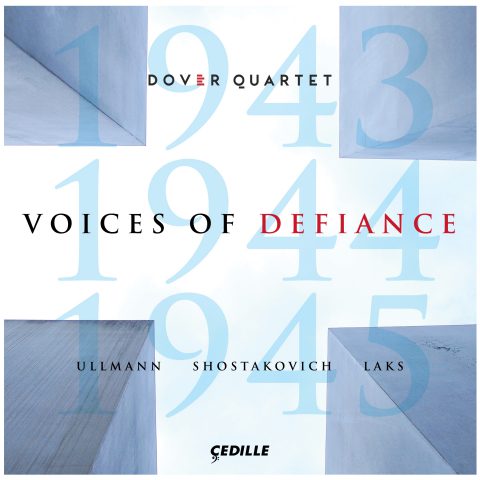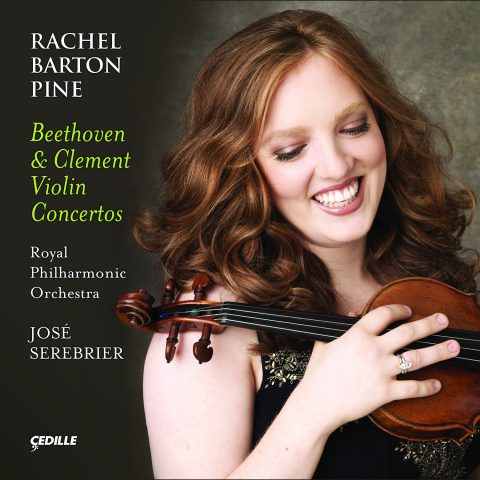| Subtotal | $18.00 |
|---|---|
| Tax | $1.85 |
| Total | $19.85 |
Store
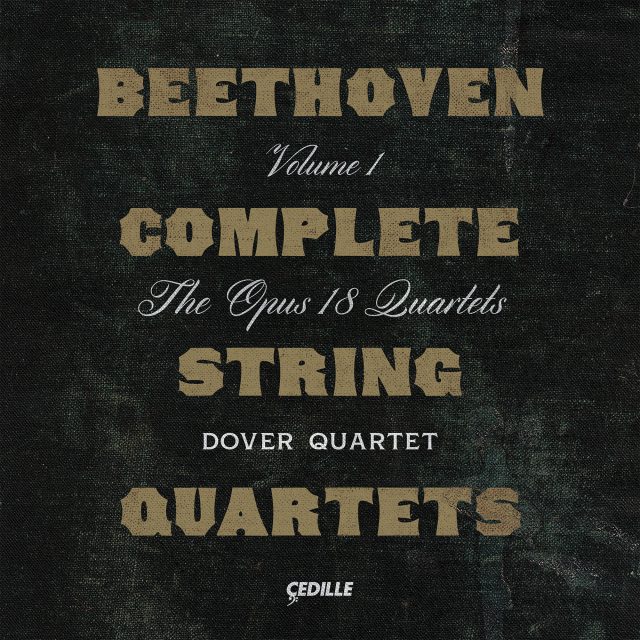
Store
Beethoven Complete String Quartets, Volume I — The Opus 18 Quartets
The Dover Quartet, “the young American string quartet of the moment” (The New Yorker), launches its emerging, three-volume complete Beethoven quartet cycle with the six Opus 18 quartets, often cited as the epitome of the classical string quartet as developed by Haydn and Mozart while foreshadowing Beethoven’s future innovations.
In concert, the quartet has presented three complete Beethoven cycles, including the University at Buffalo’s renowned “Slee Cycle” — which has offered annual Beethoven quartet cycles since 1955 and has featured the likes of the Budapest, Guarneri, and Cleveland Quartets. The Dover is featuring Beethoven’s Quartet in G major, Op. 18, No. 2, in its 2020–2021 season programming.
This recording is made possible by generous support from Patricia A. Kenney and Gregory J. O’Leary

Listen to Jim Ginsburg’s interview
with Milena Pajaro-van de Stadt
on Cedille’s Classical Chicago Podcast
Preview Excerpts
LUDWIG VAN BEETHOVEN (1770–1827)
String Quartet No. 1 in F major, Op. 18, No. 1
String Quartet No. 2 in G major, Op. 18, No. 2
String Quartet No. 3 in D major, Op. 18, No. 3
Artists
Program Notes
Download Album BookletOp. 18: Tradition and Theatricality
Notes by Nancy November
Among the new works that appear here, admirable
works by Beethoven (published by Mollo) are striking.
Three quartets provide full evidence of their art;
yet they must be often and well played, as they are
difficult and in no sense popular.
This 1801 reviewer of the three first published quartets from Beethoven’s Op. 18 voiced virtually the opposite viewpoint to most modern commentators. At first, the works were considered challenging both for players and listeners. This opinion was to change quickly, especially as his yet more demanding quartets appeared. Today the opus is considered comparatively easy and “light.” Recent commentators emphasise the influences of Haydn and, especially, Mozart found in Op. 18, and the works’ traditional “classical” stance. Op. 18 is, furthermore, clearly seen as a stepping stone, a rite of passage through which Beethoven must pass to arrive at maturity in the middle and (above all) late quartets.
The modern-day viewpoint means that we tend not to see points of continuity between the early and middle quartets and that the larger musical context for Beethoven’s middle-period works is largely disregarded. However, the early and middle-period quartets are part of a larger trend towards theatricality and piquant play with technique that is found in the works of Viennese quartet composers around 1800.
The canonised works of Haydn and Mozart certainly played a role in setting the bar high in terms of technical and expressive demands. And they contributed significantly to the prestige of the genre. Given this precedent, modern-day scholars put forward the view that the composition of string quartets entailed considerable hard work and anxiety for Beethoven, such that he avoided the genre for a considerable time (28 years). An anecdote from Hans Georg Wegeler has it that Beethoven received a request for a string quartet from Count Appony in 1795, but for unknown reasons was unable to fulfil the request and instead found himself composing the Trio Op. 3 and Quintet Op. 4. Possibly, he backed out of quartet composition for this patron, who was after all the dedicatee of Haydn’s celebrated Opp. 71 and 74 quartets (1793). As to the actual commission and composition of Op. 18, there might have been an element of staged rivalry involved there, too, since Lobkowitz commissioned quartets from Haydn and Beethoven simultaneously in autumn or winter of 1798–1799. In this case, H. C. Robbins Landon conjectures that it was the older composer who backed down, producing only the two quartets of Op. 77 (1799) while Beethoven produced a set of six.
Tempting though we might find this clash-of-the titans theory, the evidence can be read in quite a different way if we move away from a string-quartet-centric view. Prior to the composition of string quartets Beethoven was occupied with the (equally satisfying) composition of other chamber works such as piano trios, which would show off his skills. Haydn was also investing creative energies elsewhere, taking a particular interest in large-scale vocal works on return from England, and observing to August Griesinger late in life that he wished he had put more effort into that area of composition rather than instrumental music. Haydn’s words, added as an incipit in the first edition of his quartet fragment Op. 103 (1803), can be taken at face value: “Gone is all my strength, old and weak am I.” In his newly published Op. 18 (1801), meanwhile, the young Beethoven forged ahead with the latest trends in quartet theatricality.
Op. 18, No. 3
This work was the first written of the Op. 18 set. One can find clues as to why Beethoven (apparently at the advice of his first violinist, Ignaz Schuppanzigh) ultimately decided not to place the work first in the first edition. It does not immediately court the listener’s favour, and contains several passages of striking disruption. The first movement opens with a leap of a seventh in the first violin, and the key is not immediately or strongly asserted: the voices enter pianissimo with long held notes; and although the chord on the downbeat of measure 3 is a tonic triad, the first violin has a suspension, which blurs the rhythm. If the listener’s task is tricky, so too is the task of the performers. They must carefully execute the long bow strokes in this first paragraph, and the remainder of the work contains quite a few more difficulties, especially the intricacies of the slow movement, the speed of the finale, and the moments of heightened theatricality.
Although the character of the Presto finale is very different to that of the opening movement, it can also be heard on certain levels to “replay” the opening of the quartet. The movement begins with a solo first violin and emphasises the interval of a seventh in the first phrase; so too there is a play with the rhythm on the downbeat of measure 3. The above-cited reviewer from 1801 was justified in noting that the works required careful study from performers: here Beethoven asks for a very fast tempo, and the first violin part has sustained passage work in the high register and dramatic leaps out of this register. This movement also foreshadows the registral excitement and the play with quartet space that is a hallmark of the “Rasumovsky” quartets, Op. 59.
Op. 18, No. 1
There were, no doubt, several reasons why Beethoven ultimately decided to place this work at the head of his first set of quartets. A prime reason might have been that the first movement is focused on developing the opening idea. The string quartet was by this time held up as the supreme vehicle for showing off one’s compositional skill, and a first opus of quartets was also the place to make a reference to the canonized quartets of Haydn with their masterful use of motivic working. The extensive development of the opening motif in the movement, and the placement of this work at the head of the set could thus be understood as fitting in with expectations of the string quartet as “a very perfect genre in music.”
If the first movement of Op. 18, No. 1 was designed to appeal more to the connoisseur, then the inclusion of a slow movement with a strong reference to the pathetic style (the movement is titled “Adagio affettuoso ed appassionato”) was likely to appeal to the amateur: consider the contemporary rage for Beethoven’s “Pathetique” Sonata, composed in 1798. This movement provides the clearest invocation of theatre in the Op. 18 set; indeed Beethoven even went so far as to note “The last breaths” (“Les derniers soupirs”) over the final measures of the movement in a sketch. The work again begins in medias res (in the midst): a textural blanket is created by the lower voices, above which the first violin enters with a beautiful song, reminiscent of an operatic cavatina. David Wyn Jones suggests that for Beethoven’s early listeners, the Adagio from Op. 18, No. 1 might even have conjured up quartet arrangements of operatic numbers, which were not uncommon at the time.
Op. 18, No. 2
The G major quartet from the Op. 18 set acquired the nickname of “Komplimentierungsquartett” (“greetings quartet”) among German-speaking performers. Joseph Kerman concludes, however, that its “greetings” hardly represent simple Haydnesque imitation: “It is as though Beethoven were deliberately exhuming an older, alien manner.” It is in the development (middle) section of the first movement that real disruption to the polite quartet discourse occurs: the dotted-note idea that forms the second component of the opening theme takes on a life of its own and is treated in fugato in E-flat major, beginning in measure 105. Each voice presents this motive, starting with cello, then first violin, second violin, and viola. The fugato breaks off abruptly at a general pause, after which the quartettists seem to make tentative attempts to restart the conversation once more. Pauses are rife, and the discourse dwindles to pianissimo. This disruption now becomes a formal rupture, such that the location of the recapitulation (reprise; third section) is in dispute among the voices. Cello, then viola, then first violin, then second violin enter in turn with the stern forte figure from the opening section of the work, in the tonic key; ultimately, it is the first violin that finally succeeds in presenting the opening theme in its (almost) original tonal context.
The Adagio cantabile once again draws on the cavatina. This movement looks back to the song-like slow movements in Haydn’s early quartets, which also contain elaborately ornamented reprises of the theme with a quasi improvisatory style. As opposed to the moments of self-consciously staged theatricality elsewhere in the work, this Adagio style seeks to transcend the stage and invited contemporary listeners into what appears to be an intimate, spontaneously unfolding discourse. This is greatly intensified in the third part of the movement, where the cello becomes a dialoguing partner with the first violin.
Op. 18, No. 5
The A major quartet, which was composed next in the series, is a work that has long been viewed in terms of the pervasive Haydn-Mozart models paradigm for the younger composer’s early works. Beethoven seems to have chosen to place the minuet movement second in order to match Mozart’s A major quartet, K. 464. (The only other minuet movement in the Op. 18 set, in No. 4, is placed third, following tradition.) In third place follows the movement that is most clearly designed to invoke the Mozartian model, but which also moves most radically away from that model. Both movements are in D major, duple time, and are marked “Andante.” Beethoven’s is “Andante cantabile,” as had been Mozart’s at one stage in the compositional process. Both, furthermore, comprise a set of variations — a form that was considered a touchstone for showing off the skills of composers and performers at this time — which perhaps explains the greater surface proximity of Beethoven’s movement to his Mozartian model. K. 464 has six variations and a coda, while Op. 18, No. 5 has five variations plus coda.
Beethoven’s theme, like Mozart’s, begins with an up-beat and is soft, lyrical, and simple in form, even more so than the Mozartian model, which has unequal phrase lengths. This provides an appropriately innocuous backdrop for an immediate show of compositional prowess in the very first variation. Mozart crafts an elegant melodic variation, with extensive first violin embellishment and delicate accompaniment. Beethoven, on the other hand, appeals to quartet theatricality to dramatize the very act of variation: the cello starts with a semiquaver staccato embellished version of the theme, and viola and second violin follow at the distance of two measures, respectively, as if launching a fugue. First violin then butts in after only one measure, with the theme in its highest register, and all parts move into a contrary-motion cadence. This first variation is striking in its departure from the decorum of the Classical variation, challenging the usual protocols of variation technique.
Op. 18, No. 4
Many 20th- and 21st-century commentators on these works consider this to be the least accomplished of the Op. 18 set. Yet there are significant grounds for viewing this work in a more positive light. In particular, an understanding of the work’s coherence is assisted by a focus on register and motif. The first movement opens with a fourth, G–C, in the first violin’s low register, but expands rapidly outward. This expansion is not complete until the final section of the work, where just prior to the coda high C4 is attained in the first violin and quitted by leap to open G — a dramatic reversal of the opening interval. The second movement starts with a reference to the opening fourth, projected up the octave; elsewhere it will remain relatively low in register as befits its emphasis on fugato. The Menuetto begins in the mid-low register, with the leap of a fourth heard in the original octave. In the course of the Trio, the first violin “overshoots” the high point of the first movement. The first violin’s concluding turn figure, in the low register, is reminiscent of that which decorates the opening theme of the first movement.
The rondo finale also draws on the leap of the fourth; indeed, this serves to unify the apparently diverse “fragments” of the form. The first theme ends, rather than opens, with the first violin’s leap of a fourth in the original register. Leaps of a fourth are then prominent at the beginning of the movement’s two episodes. Especially striking is the semiquaver triplet in combination with the fourth, C–G in the second episode; this blends the ornamental and leaping elements of the first movement’s first theme. This combination of register and motif to create aurally and physically palpable thematic links across the work was not new around 1800: Haydn had done something similar in his C major quartet, Op. 20, No. 2 in 1772, for instance. Yet it certainly could count as an aspect of the modern style, and an aspect of compositional skill that was associated with the more elevated string quartet style.
Op. 18, No. 6, “La Malinconia”
This work is frequently praised as forward-looking, mainly because of the slow introduction to the finale, which Beethoven titled “La Malinconia.” This movement emerges (rather than opens) in the mid-high register, here sempre pianissimo. C.P.E. Bach’s invocation of his own melancholy feelings in his “C.P.E. Bach’s Empfindungen,” H. 300, Wq. 67 (1788) similarly begins in medias res. Mozart’s A minor Variations, K. 511, is another work that can be placed in this tradition; like Haydn’s F minor Variations, it deploys a dotted, funereal motif. Exaggerating this trait, Beethoven’s “La Malinconia” moves with a double-dotted gait. The rather overstudied Italian performance direction of “La Malinconia” suggests the pedantic character that was associated with the melancholic. Beethoven writes: “Questo pezzo si deve trattare colla più gran delicatezza” (this piece must be executed with the greatest delicacy). The movement is marked Adagio, as is typical of works in this tradition, but the pulse here is extremely languid, clocking in at a mere quarter=58. (C.P.E. Bach’s “ganz Langsam” is perhaps the closest analog.)
What follows in the Allegro might be read as a resolution to the melancholy mood evoked in the first part: the contrast occurs on all levels, and the resolution of the discourse seems to involve all musical parameters. The pulse is lively, the harmonic rhythm immediately clear. Delicacy of style now suggests sprightliness and articulacy, especially given the spicy sforzandi impulses. Perhaps this is the sanguine counterpart to a melancholy persona? Yet is not this sense of overcoming, too, overdone? And does the cheerful music always necessarily trump the more tragic voice? In Beethoven’s work, the references back to the Adagio in the Allegro suggest that this is not the case here. They suggest, rather, that the preceding depths of depression cannot be completely erased from the compositional persona’s memory. In this work, Beethoven created a melancholy protagonist who glances back anxiously at the tradition of melancholy music itself.
Album Details
Producer Alan Bise
Recording Engineer Bruce Egre
Digital Editor Alan Bise
Recorded November 30–December 3, 2018 and September 23–26, 2019 at Sauder Concert Hall, Goshen College Music Center, Goshen, Indiana
Graphic Design Bark Design
Cedille Records © 2020
CDR 90000 198
